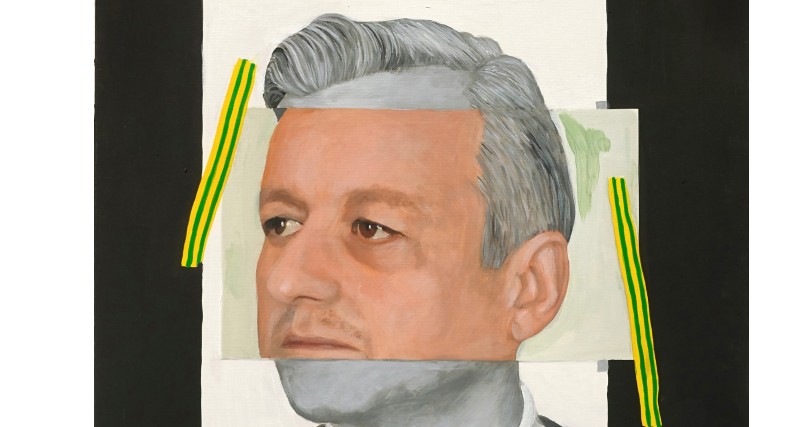Lorsque les peintres arrivèrent sur place, il était malheureusement trop tard

Thierry Lagalla solo show.
Why must the artwork be meaningful? Why must it produce what our desire expects of it, that is to say meaning? Why is it spontaneously thus? Because we want to see ourselves, we aspire to “recognise” ourselves. Because it is through and “for us” that painting exists, it cannot exceed “our” desire, therefore it must signify and represent. “No art without representation”, Aristotle would say. “No art without re-re-re-representation”, Thierry Lagalla would reply!
And, “when the painters arrive on site, it is sadly too late”.
Two overly cooked pieces of toast, burnt, perfectly charred, welcome us. They are made of resin, painted with oil paint, in a Van Dyck brown, magnificent pictorial ambassadors of this facetious neo-classical artwork, under-realist and with permanent heuristics. A creation that manufactures, shows reality on the surface to extract from it the thinnest of shavings. No comparison to minimalism that is so widespread, that it lets you suppose that thanks to an economy of expression, a purity, an absolute is available. No, that makes Thierry Lagalla smile.
It’s the same smile that he must wear when he creates, in the shadow of daisies, as he likes to say. Where he usually shows us a creation with strong litotes, that of a real world created by the spirit that invades the world of things, a sort of limp nectar whose absorption transforms any instant in one instant. The absent or static finality enables the artwork to carry its ingenuity out to the end and to let appear with frivolity and great joy the thing in itself.
This reticule-like creation that will seize you for sure, with one of its nets; sliding, turning you upside down, echoing or acting ordinary, will end up having you fall, or more exactly tumble into its artistic inebriation.
Let’s look, as an example, at the case of a famous Asperge, whose pictorial reimbursement created the prodigious still life painted by Edouard Manet. “It’s not a still life like any other”, Georges Bataille wrote, “it is still and at the same time cheerful.” Lagalla literally activates this, maintaining the native humour of this asparagus between two plinths, accompanied by a strong encouragement: “Allez! Issa! Come On!” But what should we support? The asparagus, the still life, the twist? Whatever it may be, thanks to its shape and the mix of its creation, we are also cheerful!
Lagalla’s painting appears! It asserts itself by giving up all poetic injunctions. Thanks to and through it, visibility relieves itself from being a sign. It manifests here its radical difference with any other image. The artist activates the sovereign power of the form, and it works within us like an activity of thought.
No need for much imagination to imagine the artist skipping, playing with the seriousness, making art of anything. This is probably why he pokes his nose into abstraction with his Nez au Géo, self self-portraying himself in Le sous-moi, painting, with a flower over his ear, the Vanité à point. There is harshness when he refers to painting with Ò lo pintre ! Where, in a quick and nervous game, he audaciously maintains the conviviality between the superb and the grotesque.
In a permanent trompe-l’œil and more, entitled fuck-similé by the artist, he never stops confusing himself through mimicry. The original is a copy like any other, what delight in realising this when he engraves in fake marble, painted by him, the word MERCI, therefore transforming the ex voto into an ante voto, thanking Nature in advance for having made us mortal and human, even artistic.
Finally, let us imagine Lagalla in Nature, setting his easel down in front of the subject and painting, with tender application, the Usine à gaz. Let us retreat discreetly, let’s let him finish, and let us prepare for the arrival of new painters and we’ll see what we’ll see.
G.B.
February 2019.